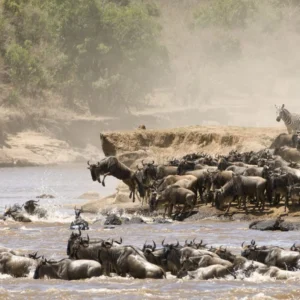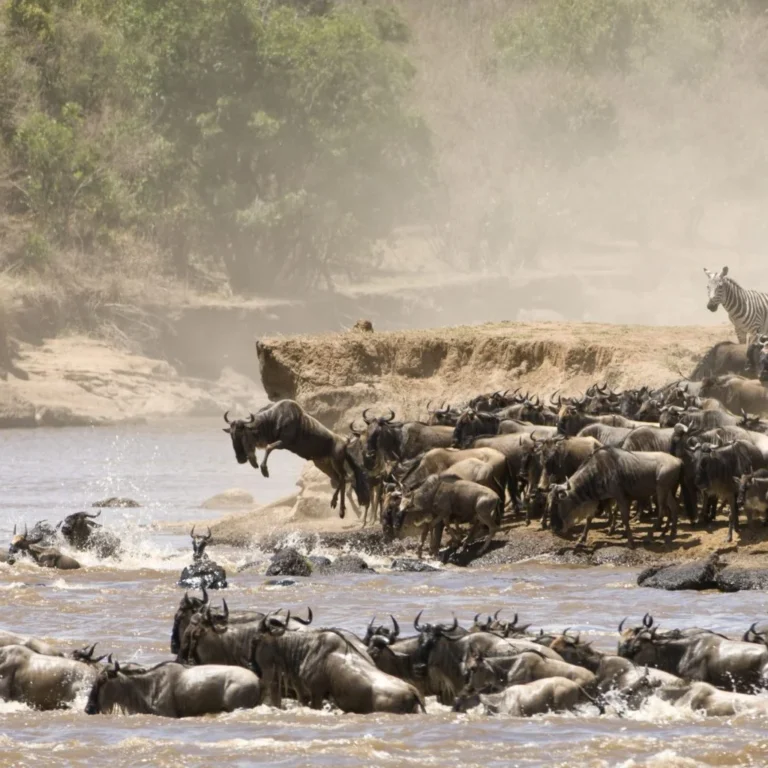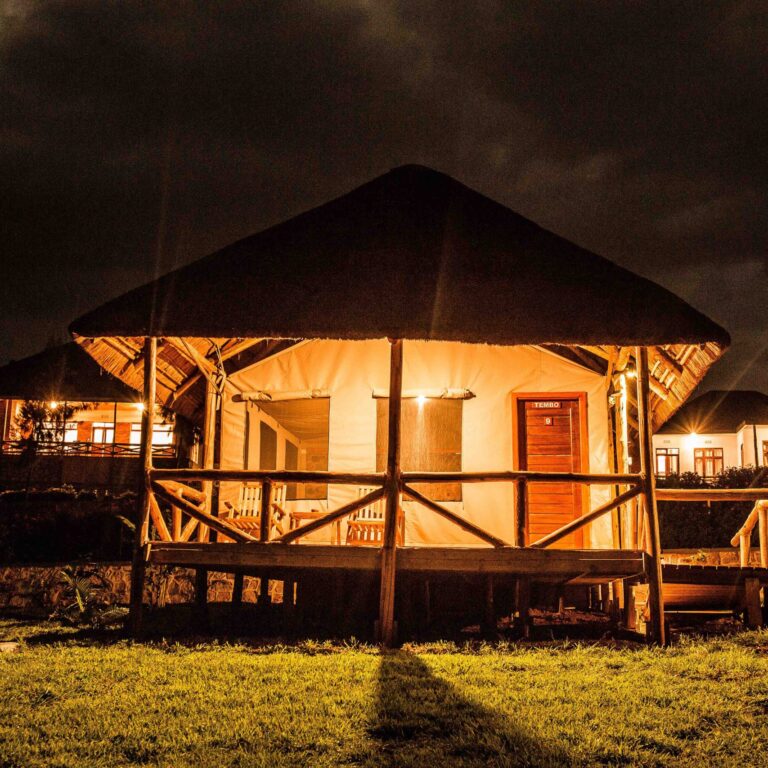An African safari a profound journey into the heart of the wild, a vibrant tapestry of life that reminds us of nature’s boundless beauty. Yet, beneath the breathtaking spectacle lies a sobering reality: many of these magnificent creatures are fighting for survival. Witnessing an endangered animal in its natural habitat is not only a rare privilege but also a powerful call to action, highlighting the critical importance of conservation efforts.
While a sighting is never guaranteed – indeed, their very scarcity makes them endangered – a safari offers a chance to connect with these vulnerable species. Here are 10 endangered animals you might be fortunate enough to see on your African adventure, along with a glimpse into their lives and the challenges they face.
1. Black Rhinos (Diceros bicornis)
The Black Rhino a critically endangered species, having suffered a catastrophic 98% population decline between 1960 and 1995 due to rampant poaching for their horns. While their numbers have thankfully doubled since that low point, they remain precariously close to extinction. Smaller and more aggressive than their White Rhino cousins, Black Rhinos are typically solitary browsers, feeding on leaves and branches.
Conservation Status: Critically Endangered (IUCN Red List)
Where you might see them. Tanzania’s Ngorongoro Crater offers one of the most reliable places to spot Black Rhinos, thanks to intensive protection within the caldera. Small, heavily guarded populations also exist in the Serengeti National Park and Nyerere National Park (formerly Selous Game Reserve) in Southern Tanzania. Outside of Tanzania, Namibia and Kenya are also key strongholds. Why they’re endangered.Poaching for their horns, primarily for use in traditional Asian medicine and as a status symbol, remains their biggest threat. Habitat loss and fragmentation also contribute to their vulnerability.
2. Mountain Gorillas (Gorilla beringei beringei)
Encountering a Mountain Gorilla often described as one of the most moving wildlife experiences on Earth. Their intelligent eyes and strikingly human-like behaviors create an unforgettable connection. These gentle giants live in tight-knit family groups led by a dominant silverback. They spend their days foraging for leaves, stems, and fruits in the dense, misty forests.
Conservation Status: Endangered (IUCN Red List) – Previously Critically Endangered, their status improved due to concerted conservation efforts.
Where you might see them. To see Mountain Gorillas, you must embark on a dedicated gorilla trekking safari, which occurs in specific rainforest parks. These are primarily found outside of Tanzania: Bwindi Impenetrable National Park and Mgahinga Gorilla National Park in Uganda. Volcanoes National Park in Rwanda. Virunga National Park in the Democratic Republic of Congo.
Why they’re endangered. Habitat loss due to human encroachment and agriculture, poaching (though less common now than in the past), and disease transmission from humans pose significant threats. Tourism plays a vital role in their conservation by funding anti-poaching units and community development.
4. Pangolins (Various species)
Pangolins truly unique and deeply enigmatic creatures. These nocturnal, scaly mammals are the only known mammals with scales made of keratin. When threatened, they roll into a tight ball, protected by their armor. They feed exclusively on ants and termites, using their incredibly long, sticky tongues. They are perhaps the most trafficked mammals in the world, making sightings incredibly rare.
Conservation Status: All eight species of pangolins (four African, four Asian) range from Vulnerable to Critically Endangered (IUCN Red List). Where you might see them. Seeing a pangolin on safari is akin to winning the lottery. They are extremely shy and nocturnal. Your best (though still incredibly slim) chances would be in more remote areas or on specialized night drives in parks across Africa, such as South Africa’s Kalahari region or parts of Botswana. They are present in various Tanzanian parks, but sightings are virtually unheard of on a standard safari.
Why they’re endangered. They are facing unprecedented poaching pressure due to demand for their scales (used in traditional medicine) and meat, particularly in Asian markets. Habitat loss also contributes to their decline.
4. African Wild Dogs (Lycaon pictus)
Known as “Painted Dogs” or “Painted Wolves” due to their striking, mottled coats, African Wild Dogs are highly intelligent, social, and incredibly efficient pack hunters. They are distinguished by their large, rounded ears and distinct lack of a dewclaw. Their cooperative hunting methods are fascinating to observe.
Conservation Status. Endangered (IUCN Red List)
Where you might see them. African Wild Dogs live in scattered populations and require vast territories endangered animals you might see on safari. Your best chances on a Tanzanian safari in Nyerere National Park (formerly Selous Game Reserve) and Ruaha National Park in Southern Tanzania, which are major strongholds for the species. Outside Tanzania, Botswana (Okavango Delta, Linyanti) and Zimbabwe (Mana Pools, Hwange) are also excellent.
Why they’re endangered. Habitat fragmentation, human-wildlife conflict (often killed by farmers protecting livestock), and susceptibility to diseases like rabies and canine distemper transmitted from domestic dogs are their primary threats.5. Cheetahs (Acinonyx jubatus)
The fastest land animal, the cheetah a marvel of evolutionary design, built for explosive speed endangered animals you might see on safari. Their slender build, distinctive tear marks, and powerful legs make them instantly recognizable. Unlike other big cats, cheetahs primarily hunt during the day and rely on open grasslands for their high-speed pursuits.
Conservation Status: Vulnerable (IUCN Red List) – While not as critically endangered as others on this list, their numbers are declining rapidly. Where you might see them. The vast, open plains of the Serengeti National Park (especially the central and eastern areas) offer excellent opportunities to spot cheetahs. They are also present in the Ngorongoro Crater and sometimes in Tarangire National Park. Outside Tanzania, Namibia has the largest population. Why they’re endangered. Habitat loss and fragmentation, human-wildlife conflict (often killed for preying on livestock), and a remarkably low genetic diversity (making them susceptible to disease) are major challenges.
6. African Penguins (Spheniscus demersus)
While not a typical “safari” animal in the sense of a savanna game drive, the African Penguin is a unique and charismatic endangered species found exclusively on the coasts of Southern Africa. These adorable birds are known for their distinctive “jackass” braying call.
Conservation Status: Endangered (IUCN Red List)
Where you might see them. To see African Penguins, you’ll need to visit South Africa, specifically. Boulders Beach near Cape Town, where a protected colony has established itself. Robben Island and other offshore islands along the Western and Eastern Cape coasts of South Africa and Namibia. Why they endangered. Overfishing has drastically reduced their food supply (sardines and anchovies), habitat destruction (from guano collection and human development), and oil spills are significant threats.
7. Ethiopian Wolves (Canis simensis)
The Ethiopian Wolf is the rarest canid in the world and Africa’s only wolf species endangered animals you might see on safari. With their striking reddish-brown fur, long legs, and distinctive black-and-white markings, they resemble a coyote but are more slender and elegant. They specialized predators of rodents in the Afroalpine highlands.
Conservation Status: Endangered (IUCN Red List)
Where you might see them. These highly specialized animals found only in the Afroalpine ecosystems of Ethiopia. Your best chance to see them is on a dedicated trekking safari to Bale Mountains National Park in Ethiopia, which is home to the largest population. Also found in smaller numbers in other Ethiopian highlands. Why they endangered. Habitat loss and fragmentation due to agricultural expansion, disease transmission from domestic dogs (like rabies and canine distemper), and human persecution are their primary threats.
8. African Elephants (Loxodonta africana – Bush & Forest)
While African elephants a endangered animals you might see on safari common sight on safari, it’s crucial to understand their conservation status. The IUCN has now reclassified African elephants into two distinct species. The larger African Savanna (or Bush) Elephant, which Endangered, and the smaller, more forest-dwelling African Forest Elephant, which Critically Endangered.
Conservation Status:
African Savanna Elephant. Endangered (IUCN Red List)
African Forest Elephant: Critically Endangered (IUCN Red List)Where you might see them. African Savanna Elephants: Abundant across most Tanzanian parks, especially Tarangire National Park (famous for its huge herds), Serengeti, and Ngorongoro Crater. African Forest Elephants. More elusive and found in denser forests of Central and West Africa, not typically seen on East African safaris. Why they endangered. Poaching for ivory remains a significant threat, though declining in some areas due to stronger anti-poaching efforts. Habitat loss, human-wildlife conflict (as their range shrinks), and climate change also pose ongoing challenges.
9. Grévy’s Zebras (Equus grevyi)
Distinguished from the more common Plains Zebra endangered animals you might see on safari by their narrower, more numerous stripes that extend all the way to their white belly, larger ears, and shaggier mane, Grévy’s Zebras are a truly striking sight. They adapted to more arid environments than other zebras.
Conservation Status: Endangered (IUCN Red List). Where you might see them. Grévy’s Zebras found primarily in northern Kenya and parts of Ethiopia. Your best chances are in Samburu National Reserve, Buffalo Springs National Reserve, and Lewa Wildlife Conservancy in Kenya. They not found in Tanzania’s main safari circuit.
Why they endangered. Habitat loss and degradation (due to overgrazing by livestock), competition for water resources, and disease are their main threats.10. Chimpanzees (Pan troglodytes)
Our closest living relatives, chimpanzees incredibly intelligent primates known for their complex social structures, use of tools, and wide range of vocalizations. Encountering them in their natural forest habitat is a profoundly moving experience.






